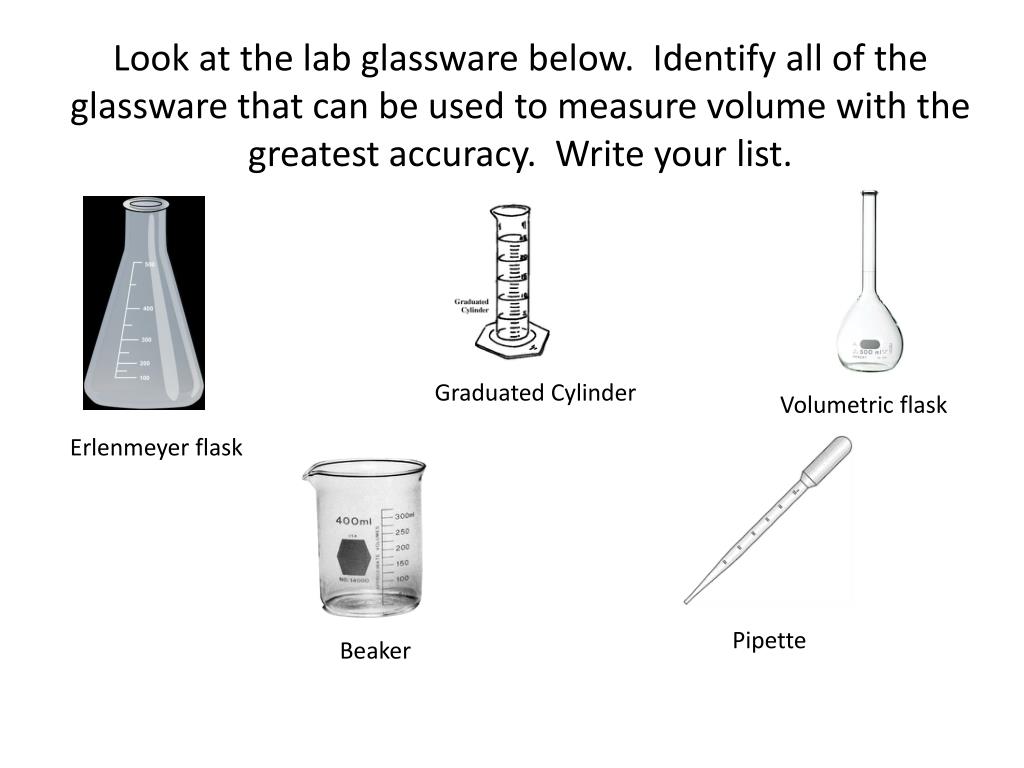

Which is the best description of a graduated flask? Volumetric flasks, burets and pipets are the most accurate with tolerances of less than 0.2%. The tolerance on graduated cylinders is about 1%. As such, they should be used only when a rough estimate of volume is required.
#Beaker vs graduated cylinder plus
The markings on beakers and flasks are usually about plus or minus 5% of the volume of the container. What should the tolerance be on a volumetric flask? When measuring liquids in a graduated cylinder, you always measure from the center of the curvature in the liquid called the meniscus. Graduated Cylinders are volumetric measuring devices designed to measure and deliver accurate volumes of liquids.

How is a 25 mL volumetric flask measured?Ī 25 mL Volumetric Flask. The marking is typically calibrated “to contain” (marked “TC” or “IN”) at 20 ☌ and indicated correspondingly on a label. The marking indicates the volume of liquid contained when filled up to that point. The neck of volumetric flasks is elongated and narrow with an etched ring graduation marking. What is the mark on a volumetric flask called? The scale on its side allows the amount of solution that’s been allowed to flow out to be read off. Conical flasks are better than beakers for this procedure because they can be easily swirled without risk of the contents spilling. Once the solution is in the pipette, it’s then transferred to a conical flask. Why is a conical flask better than a beaker? The burette is usually glass so that the liquid inside can be easily observed. The size of the beaker or flask should be chosen to allow for more liquid to be added during the titration process. The Erlenmeyer flask offers a slight advantage in accuracy due to its tapered sides. Why use an Erlenmeyer flask instead of a beaker? For example, a 100 mL beaker might only have marks for every 20 mL, so it would be tricky to gauge the exact volume of a liquid sample falling between the 60 mL and 80 mL marks. The volume marks on a beaker are only approximate values, and therefore only provide whole numbers. A volumetric flask should be used whenever an accurate concentration of solution is required.

These flasks, unlike Erlinmeyer flasks or beakers, are marked with lines that are calibrated to a specific volume of liquid. Why is a volumetric flask better than a beaker? They are favored when available because they are more accurate than graduated cylinders and beakers, which are other pieces of equipment that are used to measure liquids. The volumetric flask is used for measuring accurate volumes of liquid materials for laboratory experiments. Why use a volumetric flask instead of a graduated cylinder? They can hold a much larger volume than any of the other types of glassware, however, which makes them useful for mixing solutions.

Graduated cylinders can generally be considered reliable to within 1 percent. Graduated cylinders, beakers and Erlenmeyer flasks have less accuracy than volumetric glassware. Which is more accurate a graduated or volumetric glassware? The flask had the highest percent error (17.4%), so it is the least accurate. Both were small, so they are fairly accurate. The graduated cylinder and beaker were similar in percent error (2.2% and 3.5% respectively). The volumetric flask had the lowest percent error (0.3%), so it is the most accurate. Mass of empty 50-ml cylinder_12.950_ Volume read for 50-ml cylinder 32.Is a volumetric flask more accurate than a graduated cylinder? Data and calculations for 50-ml graduated cylinder. Mass of empty beaker 48.8829 Volume read for beaker 35 m Mass of beaker + water 81:3089 Mass of water in beaker by difference 32.4269_81-3089-48*883g = 32.4 Calculated volume of water Show your calculation of the volume: Percent difference for beaker Show your calculation of the percent difference: 4. Density of water from Table A Data and calculations for 100-ml beaker. Part 1 - The Accuracy and Precision of Beakers vs. 336 9 Mass of water in cylinder by difference Calculated volume of water Show your calculation of the volume: Data and calculations for 50-ml graduated cylinder: Mass of empty 50-mL cylinder 72.9509 Volume read for 50-mL cylinder Mass of cylinder + water 10 5. Density of water from Table A Data and calculations for 100-ml beaker: Mass of empty beaker 48-8824 Volume read for beaker Mass of beaker + water 81-3089 Mass of water in beaker by difference Calculated volume of water Show your calculation of the volume: Percent difference for beaker Show your calculation of the percent difference: 4. Transcribed image text: Part 1 - The Accuracy and Precision of Beakers vs.


 0 kommentar(er)
0 kommentar(er)
